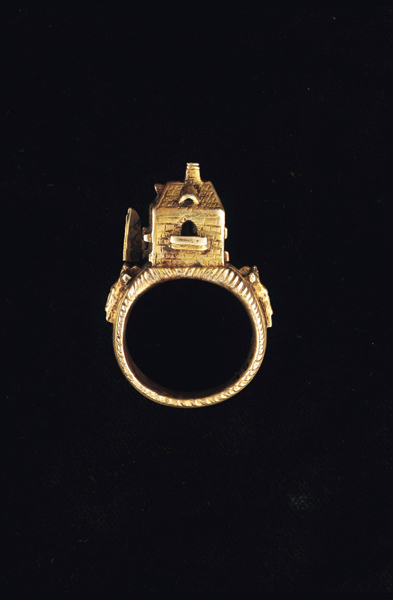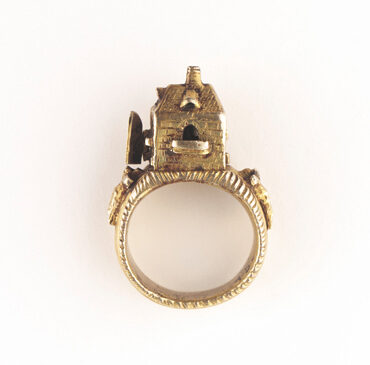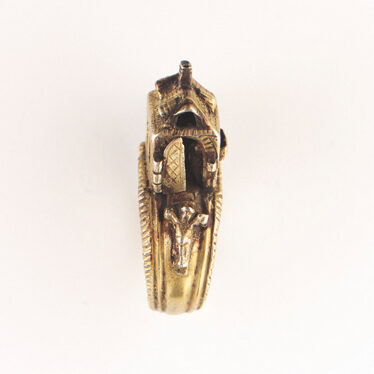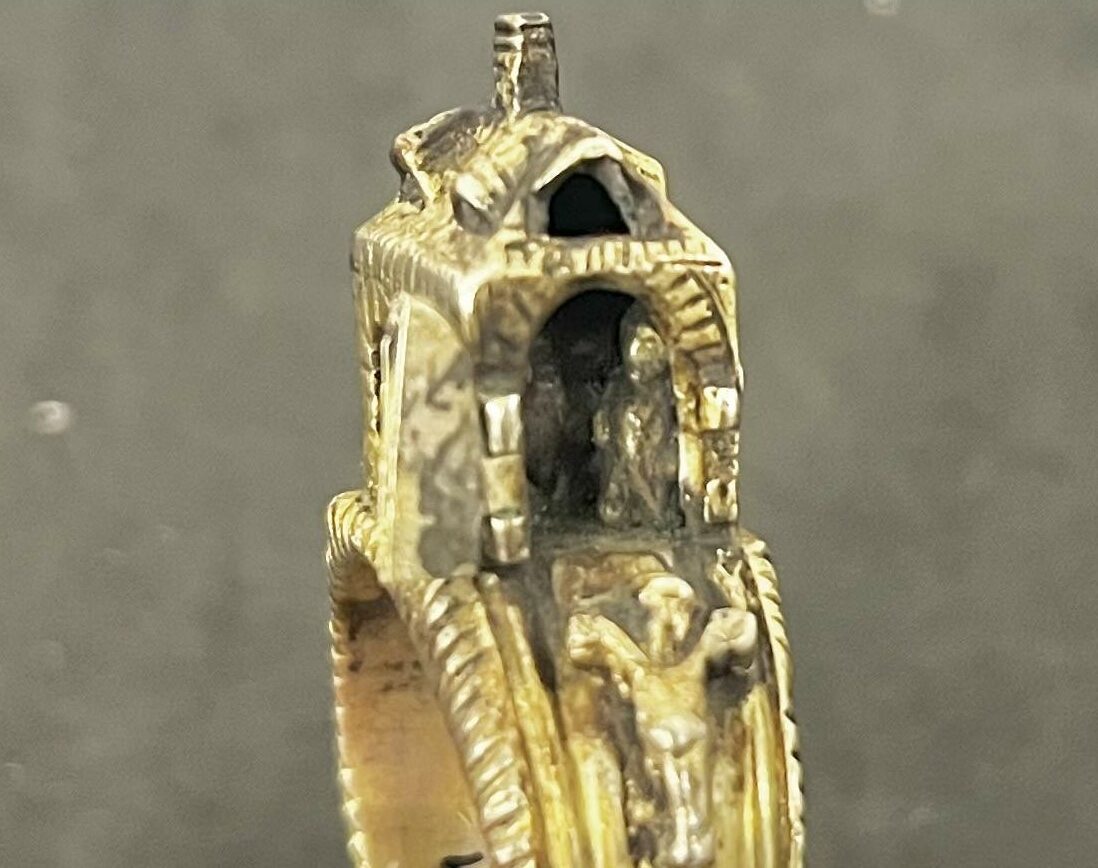The delicacy of Jewish design & culture
 JM 459 - Gilt marriage ring
JM 459 - Gilt marriage ringWe often think of Jewish culture with its most iconic objects such as the Menorah or Torah. However, we seem to underrate the value of Jewish jewellery. You might accidentally pass over them due to their tiny appearance but it’s hard to ignore the impact of these delicate gems. During my placement in the Jewish museum, I noticed that even the tiniest piece of art can reveal a profound story.
The museum’s hidden gems hold captivating stories, waiting to be unveiled and shared in diverse ways. Each object provides a glimpse into the past, offering important insights into diverse cultures, beliefs, and traditions. As we dive deeper into the history of these small, often overlooked objects, we enrich our understanding of humanity’s collective journey through time.
The Gilt Marriage Ring, part of the Franklin Collection, serves as a powerful historical artefact, offering glimpses into Jewish life and preserving wedding traditions that have endured to this day. From its exquisite craftsmanship to the rich symbolism embedded within, this ring perfectly captured the beauty and depth of Jewish design and culture.
Haubarg: The Representation of Identity
Based on the period of the ring, the brick-built bezel probably refers to the distinctive farmhouses Haubarg, a 17th century German architecture style.
Can you imagine a place where humans and animals coexisted under one roof for centuries? That’s precisely what Haubargs offered, providing living quarters for families at one end and stable and storage areas for livestock at the other. The construction and maintenance of these substantial properties demanded a great amount of resources and labour. Therefore, it was often associated with wealth and social status. However, exceptions were permitted sometimes. Families from different backgrounds would cooperate together in order to exploit the functional and cultural significance of Haubarg. Therefore, Haubarg also represented a sense of community, bridging gaps between people from varying backgrounds. These structures occasionally borrowed inspiration from the Gentile surroundings, reflecting the dynamic connections of cultures and influences as well.

JM 459 – side view

A hauberg on the Eiderstedt peninsula around 1895, by Fritz Stoltenberg
Mysterious figures
It is extremely interesting to observe so many things at once when you open the small hinged door of this ring, particularly the possible female figure that stands to the right.
Since we believe the bezel probably refers to the Haubarg, it is possible that the mysterious figure behind the woman at the back could be an animal. I’ve spent a while trying to figure out what animal exactly it is, and the most likely answer would be a sheep (It is definitely a four legged species).
The ring’s internal design might illustrate an ideal daily married life from a male perspective, given that it was the duty of the groom to present the ring, which then became the bride’s property.

JM 459 – side view

JM 459 – detail
More than a ring
While observing the Jewish wedding custom, I’ve noticed the spiritual disclaimer is always more valuable than the material itself. Evidently, within the tradition of a 17th century wedding, we also have to understand the monetary value of a wedding – and of a wedding ring. However, considering that this elaborate miniature ring was not meant to be worn, it acts a key symbol throughout the ceremony, with an emphasis on its function as a ‘witness’. The same symbolism also occurs with the gold band.
With this in mind, the act of giving the bride this ring would not necessarily imply a loss of her whole autonomy, even if she accepted the groom’s money. The ‘transaction’ was valued as the establishment of an exclusive intimacy between the couple. As such, some interpret the ring as a representation of the equality between the two partners in the marriage. It serves as a reminder that they stand as equals, ready for a lifelong journey together, with mutual respect and shared responsibilities.
So, the next time you come across a piece of Jewish jewellery, take a closer look. Appreciate the delicate craftsmanship and the cultural significance embedded within. Even you aren’t familiar with the culture in the first place, I would still encourage you to interpret each pieces with your imagination. Because beyond their small appearance, these gems are a window into a rich and vibrant heritage, where art, tradition, and spirituality intertwine to create something truly remarkable.